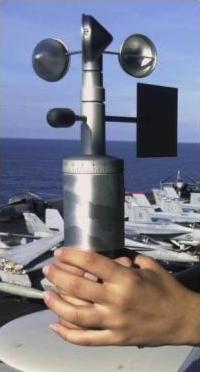
Choose the ideal product according to your criteria. If you want to buy an anemometer and do your wind speed or pressure measurements, consider your measurement needs and the prices of the instruments on offer.

What matters is the accuracy of the wind data it provides! Do you know how your thermometer to measure temperature works? Not sure, and in fact, not so important. In the end, it does not matter how the anemometer works. Other anemometers of this type are ball, tube, and Pitot tube anemometers.

It has evolved but its operating principle has remained the same. These devices for analysing wind pressure are less used than those for providing information on wind speed, but they are still used.Īmong the anemometers designed specifically to measure wind pressure but also capable of providing wind speed, we can mention the very first anemometer: the plate anemometer. Some of these weather instruments are based on measuring the force that the wind exerts on a plate that is held facing it, but others measure the wind pressure through a U-tube with a built-in pressure gauge. To measure wind speed and not as a weather forecast.Īnemometers that are more specialised in measuring wind pressure operate differently by design. A commonly used cup anemometer or Robinson’s anemometer measures horizontal wind speed and withstands extreme conditions.Īmong the instruments that also measure wind speed, the main ones are the propeller anemometer (easily used by home users), the windmill (or Byram) anemometer, the hot-wire anemometer, the ultrasonic anemometer, the bi-directional anemometer, the acoustic resonance anemometer, and the laser anemometer. None of them give the direction of the wind without a weather-vane.įirst, let's take the cup anemometer (Robinson's). Although their nature changes, their function remains the same: to measure wind speed and pressure secondarily, or vice versa. Today, there is not one anemometer, but many. To obtain its direction, you need to combine the anemometer with a wind vane! They only estimate the speed and pressure. In construction or industry, measuring wind speed is also important.īeware, however: contrary to what you might think, anemometers do not measure the direction of the wind. Are they the only ones to measure temperature or humidity? No, of course not! Other sectors such as air transport or shipping, which are very prone to bad weather and sudden changes in the weather, are also major users. Of course, the anemometer is not only used by the weather service. You may have already heard that the tide has turned, and therefore the weather will change. But why is that? The anemometer is a valuable piece of meteorological equipment for one simple reason: the wind is an essential parameter for predicting and understanding changes in weather conditions. In this case, it is worthwhile combining different versions here, such as the flow measurement instrument, the thermal anemometer and the volume flow hood.Of course, wind speed is an important piece of information in weather forecasting, as is the measurement of temperature, for example. The combination of different measuring instruments is fundamental, particularly when you are reliant on efficient and detailed values. For flow measurement, you also have the option of using a volume flow hood as well. These wind speed meters have a built-in vane which can have a different diameter. These values, in combination with the airspeed and air temperature, can be very helpful and important for your analysis. Some versions also have the possibility of measuring the dewpoint and wet bulb temperature, as well as wind speeds. It can also be used as a flow measurement instrument. However, outdoor use is also possible.ĭepending on the instrument, you have the option of not just using the vane anemometer to measure wind speed. This makes it very easy to do a flow measurement in the duct. Most models are fitted with a telescopic probe.

The vane anemometer is ideally suited for this. Depending on the design, it can very easily be inserted into the ventilation shaft via a telescope, so that it can carry out measurements there. This is where the anemometer comes into its own. The problem here is that it is not always easy to control ventilation systems. If these values are not correct or change, it may affect the indoor air quality.

Ventilation systems are based on airspeed, temperature and humidity. In particular, it may make sense to use one for the measurement of air velocities in rooms. However, it is in fact not only outdoors that a wind speed meter is used. Measuring wind speed is a concept that many users associate above all with outdoor use.


 0 kommentar(er)
0 kommentar(er)
